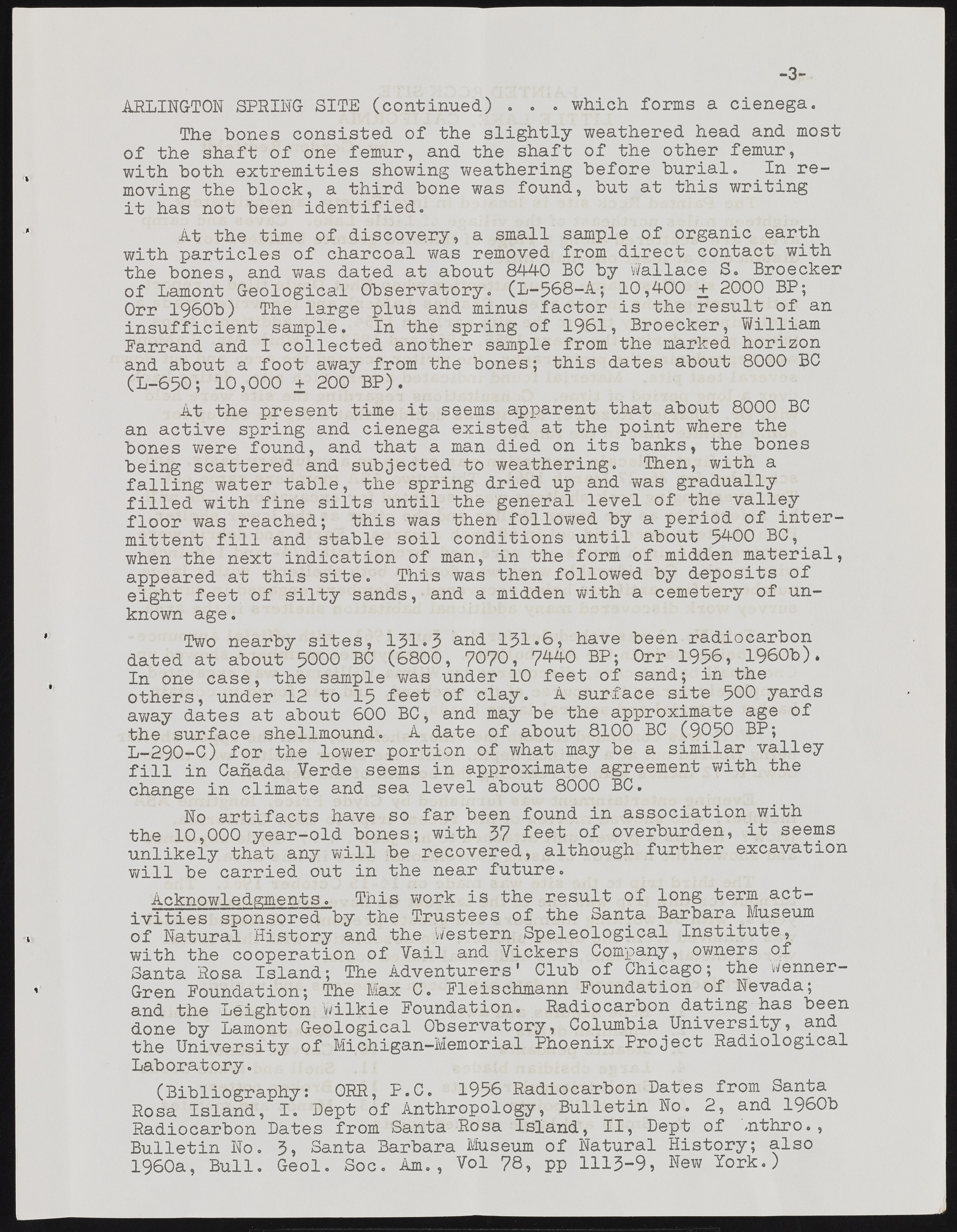Copyright & Fair-use Agreement
UNLV Special Collections provides copies of materials to facilitate private study, scholarship, or research. Material not in the public domain may be used according to fair use of copyrighted materials as defined by copyright law. Please cite us.
Please note that UNLV may not own the copyright to these materials and cannot provide permission to publish or distribute materials when UNLV is not the copyright holder. The user is solely responsible for determining the copyright status of materials and obtaining permission to use material from the copyright holder and for determining whether any permissions relating to any other rights are necessary for the intended use, and for obtaining all required permissions beyond that allowed by fair use.
Read more about our reproduction and use policy.
I agree.Information
Digital ID
Permalink
Details
More Info
Rights
Digital Provenance
Publisher
Transcription
% % - 3 - ARLINGTON SPRING SITE (continued) . . .which forms a cienega. The bones consisted of the slightly weathered head and most of the shaft of one femur, and the shaft of the other femur, with both extremities showing weathering before burial. In removing the block, a third bone was found, but at this writing it has not been identified. At the time of discovery, a small sample of organic earth with particles of charcoal was removed from direct contact with the bones, and was dated at about 8440 BC by Wallace S. Broecker of Lamont Geological Observatory. (L-568-A; 10,400 + 2000 BP; Orr 1960b) The large plus and minus factor is the result of an insufficient sample. In the spring of 1961, Broecker, William Parrand and I collected another sample from the marked horizon and about a foot away from the bones; this dates about 8000 BC (L-650; 10,000 + 200 BP). At the present time it seems apparent that about 8000 BC an active spring and cienega existed at the point where the bones were found, and that a man died on its banks, the bones being scattered and subjected to weathering. Then, with a falling water table, the spring dried up and was gradually filled with fine silts until the general level of the valley floor was reached; this was then followed by a period of intermittent fill and stable soil conditions until about 5400 BC,^ when the next indication of man, in the form of midden material, appeared at this site. This was then followed by deposits of eight feet of silty sands, and a midden with a cemetery of unknown age. Two nearby sites, 151.3 and 1 3 1 .6 , have been radiocarbon dated at about 5000 BC (6800, 7070, 7440 BP; Orr 1956, 1960b). In one case, the sample was under 10 feet of sand; in the others, under 12 to 15 feet of clay. A surface site 500 yards away dates at about 600 BC, and may be the approximate age of the surface shellmound. A date of about 8100 BC (9050 BP; L-29O-C) for the lower portion of what may be a similar valley fill in Canada Verde seems in approximate agreement with the change in climate and sea level about 8000 BC. No artifacts have so far been found in association with the 10,000 year-old bones; with 37 feet of overburden, it seems unlikely that any will be recovered , although further excavation will be carried out in the near future. Acknowledgments. This work is the result of long term activities sponsored by the Trustees of the Santa Barbara Museum of Natural History and the western Speleological Institute, with the cooperation of Vail and Vickers Company, owners of Santa Rosa Island; The Adventurers' Club of Chicago; the wenner- Gren Foundation; The Max C. Fleischmann Foundation of Nevada; and the Leighton Wilkie Foundation. Radiocarbon dating has been done by Lamont Geological Observatory, Columbia University, and the University of Michigan—Memorial Phoenix Project Radiological Laboratory. (Bibliography: ORR. P.C. 1956 Radiocarbon Dates from Santa Rosa Islald, if Dept of Anthropology, Bulletin No. 2, and 1960b Radiocarbon Dates from Santa Rosa Island, II, Dept of ,nthro., Bulletin No. 3, Santa Barbara Museum of Natural History; also 1960a, Bull. Geol. Soc. Am., Vol 78, pp 1113-9, New York.)

